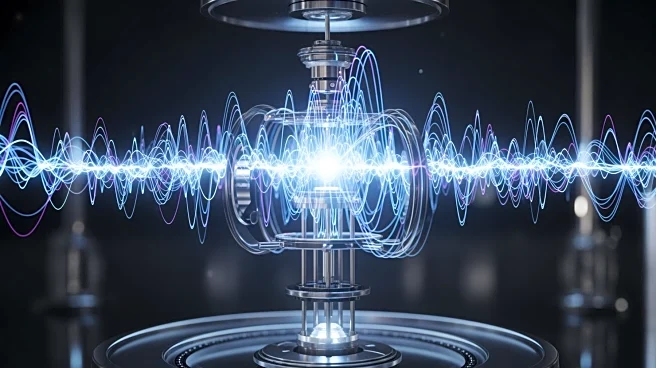What's Happening?
Yu Du and colleagues have presented evidence that Cooper pairs, bosonic electron pairs known for their superconducting properties, persist in an anomalous metallic state. This state appears between superconducting and insulating
states, challenging existing theories of localization in two-dimensional systems. The study focused on atomically thin NbSe2, a crystalline 2D superconductor, using magnetotransport measurements and Raman spectroscopy. Despite losing global superconductivity, local Cooper pair fluctuations remained, indicating a need for further theoretical exploration.
Why It's Important?
This discovery has implications for the field of condensed matter physics and the development of new materials with unique electronic properties. Understanding the behavior of Cooper pairs in different states can lead to advancements in superconductivity research, potentially impacting technology sectors reliant on efficient energy transmission. The findings challenge existing theories, prompting further investigation into the fundamental principles governing electron behavior in materials.
What's Next?
Further research is needed to develop a comprehensive microscopic theory explaining the persistence of Cooper pairs in the anomalous metallic state. Scientists may explore potential applications in electronics and materials science, leveraging these findings to innovate new technologies. Collaboration among physicists and material scientists will be crucial in advancing this area of study.











